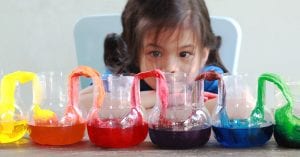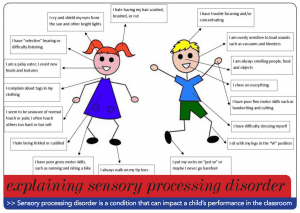Nighttime fears are highly common—and not just for little kids, either. “Studies show this is a very common issue, affecting up to three-quarters of kids from preschool through adolescence at one time or another,” clinical psychologist Jayne Schachter Walco, Ph.D. of Parsippany, New Jersey, says. “Parents think of fears as something only small children deal with, but that’s untrue.”
Young children aged three to six are more likely to complain of “fantastical” fears like monsters and ghosts, while older children fear things that could actually happen, like a fire, storm, or a home intruder, Walco says. That’s because small children have trouble distinguishing fantasy from reality, while school-agers are becoming more aware of the sometimes-scary real world. Though fears vary for different children, parents can address them more or less the same way. Read on for how to slay the scariest of scary monsters at your house.
Fear Faker?
Young children are champions at stalling bedtime; how can parents tell if monster fears are more of the same? “When a child learns that complaining about a fear is a successful tactic to postpone bedtime, he might continue to do this even without any real fear,” says Shelby Harris, Psy.D., director of the Behavioral Sleep Medicine Program at Montefiore Medical Center in New York City. But parents can sleuth out a genuine phobia, she says.
A real fear will be quite intense and will be present during the day, not just at night. So if your little arachnophobe only fears spiders after seven p.m., the fear may be bedtime-related, while a fear that’s present at other times is likely authentic.
Fear fix: Treat your child’s fears (even ones you suspect are less than genuine) with empathy and understanding, Harris says. Never laugh at your child or humiliate her. Instead, say “I understand how this might be scary for you, but you’re always safe here.”
Routine Scene
Children with irregular sleep schedules are more prone to nighttime fears and nightmares, Walco says. Why? Overtired children have more difficulty reaching and maintaining deep sleep and spend more time in lighter, “dreaming” sleep, so vivid nightmares may come calling more often. These tired tots may wake more often during the night, resulting in more time spent pondering whether that shadow in the corner is really a monster in waiting.
Fear fix: Maintain a predictable, age-appropriate bedtime routine every night to boost relaxation before bed and help ensure that children get enough rest. Preschoolers need 10-12 hours of sleep each night; school-agers and teens need 9-11.
Read Next | A Guide to Home Improvement in Staten Island
Bedroom Buddy
Nighttime fears can seem more frightening when children sleep alone, Harris says, which is why children often ask to sleep with parents when they’re afraid. Whenever possible, though, parents should avoid the “quick fix” of letting kids hop into mom and dad’s bed, as this can reinforce fear by communicating that a child’s bedroom isn’t a safe place to sleep.
Fear fix: Parents’ goal should be helping a child feel safe and comfortable in his or her own bedroom. “Whenever possible, soothe a child in the child’s bedroom, instead of in parents’ room,” Harris says. Once he’s calmed down, tell your child you’ll return to check on him in 10 minutes, and make sure to return as promised. Sleeping close to a sibling or pet can also help calm fears.
Creative Calm
Parents employ a variety of creative tricks to help fearful kids, from imbuing a stuffed animal with magical powers to dousing a room with pretend “monster spray” to giving children a pretend sword for “protection.” These tactics can be effective for the preschool set, says licensed therapist Robert Turner of the Rose Sleep Disorders Center in Denver, Colorado. But beware: parents’ willingness to play along with fears in this way might convince a child that the fear is real. (“If mom thinks monsters are real, they must be real!”)
Fear fix: For young children aged three to five, explore whether a transitional object like a special stuffed animal might help boost confidence and help a child fall asleep at bedtime, Turner says. But avoid reinforcing fear by hamming it up or acting afraid yourself.
Read Next | Why Bedtime Stories Make a Difference
Right Light
Night frights are often sparked by fear of the dark, according to Robert S. Rosenberg, D.O., medical director of the Sleep Disorders Centers of Prescott Valley and author of Sleep Soundly Every Night; Feel Fantastic Every Day. While babies under two lack the cognitive capacity to be truly afraid the dark—this comes later, when the “imagination” part of the brain takes off during the preschool years—darkness may intensify fears in older children, whether the child is scared of something pretend, like a goblin, or something potentially real, like a burglar.
Fear fix: Flooding a fearful child’s bedroom with nighttime light can backfire; too much light at night can disturb circadian rhythms, intensifying insomnia or overtiredness. Place a small, dim nightlight in a corner of the room, away from a child’s face. Better yet, choose a night light with a red bulb, and avoid blue lights—research shows they disrupt sleep patterns, Rosenberg says.
Rapid Reframe
Ultimately, the best approach is one that helps your child learn to manage fears long-term, says Walco. Help your child learn to take control of fearful, racing thoughts by reframing a scary mental image: a monster chasing your child with a knife (scary!) could become a friendly fairy chasing your child to offer an ice cream cone (sweet!). Arm your child with factual information, like the real causes of nighttime noises: spooky, creaky footsteps are really caused by your old floorboards, not an intruder. And practice self-calming strategies, like taking two deep breaths when afraid, or picturing a safe, enjoyable scene.
When a child masters the skills needed to self-regulate and actively dial down fears, he’ll be more confident, self-assured, and emotionally resilient—for life.
By Malia Jacobson, an award-winning health and parenting journalist and mom of three.

Read Next | This Is What the the New Normal Will Be like for Your Kids





